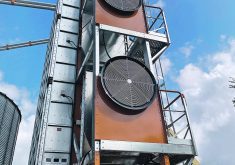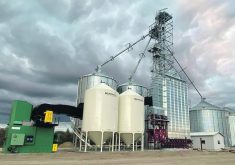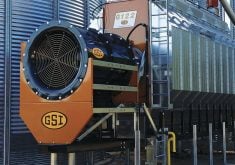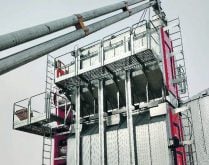The GSI TopDry is simply a dryer located just inside the roof of a grain bin. This layer of grain in the overhead drying chamber is dried by a heater and fan. Hot dry air is channelled up to the roof through a ductwork on the side of the bin.
The layer of grain at the top of the bin is held in place by baffles located in the bin. The layer is less only 32 inches deep, so resistance to airflow is very low, allowing a higher volume of air with a lower energy requirement.
Read Also

Why feds imposed EV tariffs
Moe and Kinew have a fight on their hands when it comes to eliminating the EV tariff. Canada has to worry about pissing off the U.S. and Mexico and hundreds of thousands of auto workers.
Autoflow kicks in when the grain layer has dried to a predetermined temperature. The actuator opens the dump chutes which automatically lets hot dried grain drop into the storage and cooling bin below. A smaller aeration fan at ground level captures heat from this previously dried grain and pushes it upward to help dry the next load. Heat recycling boosts efficiency and lowers drying costs.
In the case of a 36-foot dryer, 25 percent of the grain is dropped. In the case of a 24-foot or 30-foot dryer,33 percent of the grain is dropped. The drying chamber at the top of the bin is then automatically refilled and the process continues without interruption until the entire wet grain supply is empty.
















